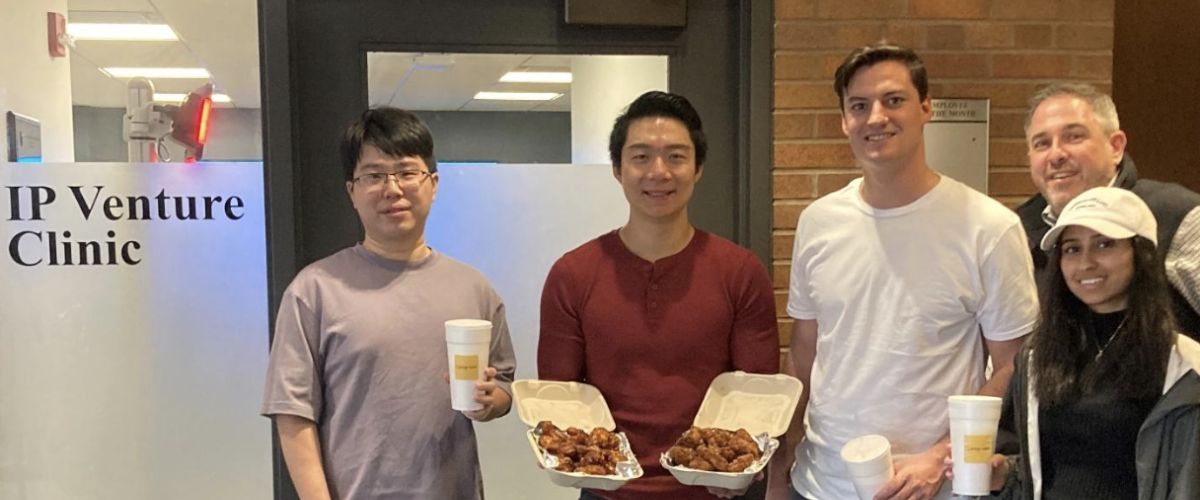For the last decade, the law school's Fusion program has trained graduate students in law, business, engineering and science to work together as interdisciplinary teams to assess, cultivate and monetize the opportunities underlying promising new ventures in a simulated environment.
Each year, the program selects technologies developed at the University or by Northeast Ohio entrepreneurs, leveraging the existing work of the university’s robust entrepreneurial, commercial connections and research ecosystems.
In Fall 2019, the Fusion program partnered with the Case Western Reserve School of Medicine and the National Center for Regenerative Medicine to explore the commercialization potential of four regenerative medicine technologies, a collaboration that leverages the strengths of both schools to provide students unique perspectives and opportunities across multiple disciplines.
“There has been significant movement globally in the regenerative medicine space, with northeast Ohio at the forefront of the industry,” said Dr. Tracey Bonfield, associate professor in the Case Western Reserve Department of Genetics and Genome Sciences and course director of the National Center for Regenerative Medicine Master’s in Regenerative Medicine and Entrepreneurship (RGME). “When our school was looking into developing a curriculum focused on entrepreneurship in regenerative medicine, I reached out to collaborate with the law and business schools, only to realize that what we hoped to develop already existed in the university. Not having to reinvent the wheel was invaluable in getting us up and running quickly, while also offering a unique opportunity to integrate our program across disciplines and schools at the university.”
Initially seeking guidance on starting her own program, Dr. Bonfield instead found a perfect match which ultimately filled the needs of both the law and medicine school. Working with Ted Theofrastous, managing director and co-founder of the Fusion program, the pair fully integrated the existing Fusion program with the RGME program, providing students with the regenerative medicine backgrounds to strengthen the course experience.
“It has been a great partnership, going back to last year and heading into this fall semester,” said Theofrastous. “Our students got first-hand experience working with this exciting new technology to simulate taking an idea, analyzing it from a 360-degree perspective and determining the best course of action, if any, in bringing a product to market.”
The class was divided in four teams, with each group tasked to identify a regenerative medicine-based technology to use as a case study. Technologies selected by the teams ranged from using engineered feeder cells to increase cancer-fighting natural killer cells in the body, developing a synthetic hemostat that amplifies the body’s ability to produce clots from traumatic internal injuries, treating tracheal stenosis using stem cells from a patient’s bone marrow and using CAR T-cell therapy to enhance cancer-fighting T-cells.
With only a portion of the class made up of medical students, one of the first steps taken in the program is to bring the law, engineering and business students up to speed on the complex science behind regenerative medicine.
“At the beginning of the course, the students researched the specific regenerative medicine concept space of their invention, while lectured instruction bridged the foundation of knowledge for our students without standard medical school or biology knowledge,” said Dr. Bonfield. “But a significant aspect of this course is for students to learn to work together, utilizing each other's education and skillsets to solve problems. No one student will have all the answers by design.”
After integrating the class into interdisciplinary teams, students began analyzing the protectability of their product’s intellectual property, identifying the unmet needs it can fill and developing an extensive market analysis of the opportunities, threats and barriers faced in commercializing an emerging technology.
By semester's end, each team presented their analysis and report, ultimately demonstrating whether their chosen technology has commercial potential and, as importantly, whether and how to move forward.
“As always, our goal is to teach Fusion students fundamental skills necessary to assess and explain the potential of new, complex technological discoveries,” said Theofrastous. "Our region is a national leader in regenerative medicine and has a robust ecosystem around this promising medical field. By immersing our students in this area, our hope is that they will both learn about the fundamentals of commercializing intellectual property, and gain valuable exposure to some of Northeast Ohio’s most promising medical innovations.”




